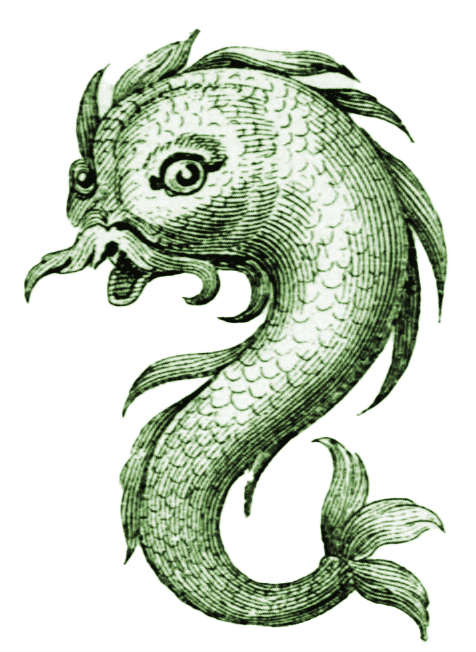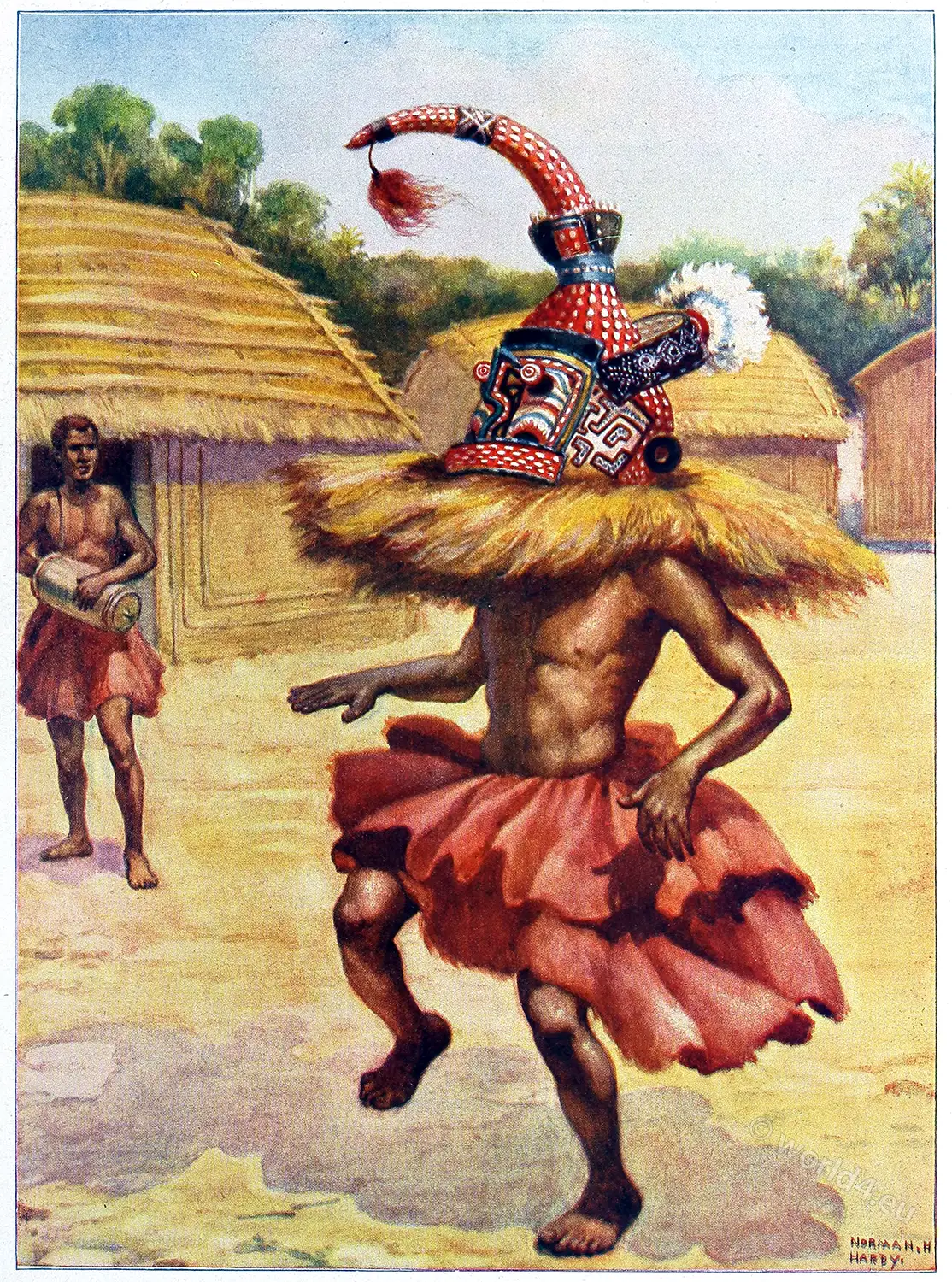Members of the Babende secret society among the Bakuba.
The “Babende” are the members of a secret society among the Bangongo, a tribe of the Buschongo or Songora on the lower Congo. When new members are admitted, three masked dignitaries, of whom the “Makenge” is the most important, are present and dance. When the drum sounds, all women and children must immediately hide; but it is said that a child is caught and slaughtered.
The Kuba Kingdom, also known as the Bakuba or Bushongo Kingdom, was an African kingdom that flourished between the 17th and 19th centuries in the region bordered by the Sankuru, Lulua, and Kasai rivers in the south-east of the present-day Democratic Republic of Congo.
It consisted of an association of about 20 ethnic groups, all Bantu peoples, in Central Africa. Its largest ethnic groups were the Bushongo, the Ngeende, the Kete, the Shoowa, the Pyaang and Twa pygmies from Kasai.
The Kingdom of Kuba formed as a large empire on the southern edge of the equatorial forest region, where exceptional wealth of resources in the combination of forest, savannah and water favoured the emergence of dense and stable populations.
Due to its relatively inaccessible location in the south of today’s Congo, away from the Congo River, Cuba was largely spared the slave hunts of the Europeans and Arabs in the 18th and 19th centuries. It could do without a military base.
Since the 1880s, Belgians had tried to gain entry into the Cuba Empire, but their gifts were always refused and King Kot aMbweeky aMileng threatened to behead any intruder. In 1892, however, African-American Presbyterian missionary William Henry Sheppard became the first foreigner to penetrate the capital; because of his black skin colour he remained alive and he was able to live among the Kuba for 4 months. At that time, the Cuba Empire covered an area about two-thirds the size of Belgium and about 150,000 inhabitants.
Towards the end of the 19th century, the empire became unstable and finally disintegrated under the subsequent Leopoldine and later Belgian colonial rule.
Source: The customs of the peoples; love, marriage, childbirth, religion, superstition, habits of life, cultural peculiarities, death and burial among all the peoples of the earth by Georg Buschan. Stuttgart, Union German Publishing Company, 1919.

Discover more from World4 Costume Culture History
Subscribe to get the latest posts sent to your email.

